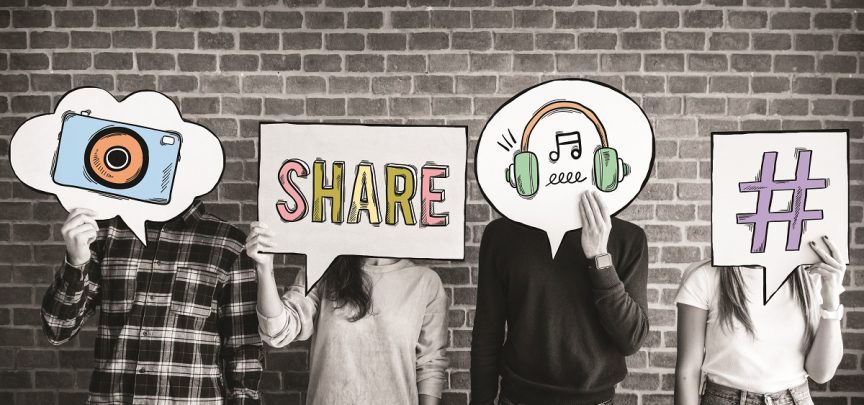If you had to guess how much time a day your tween or teen spends using social media, what would be your answer? Would you say 4 hours? Possibly 5?
That number in itself seems like an exorbitant amount of time to spend on social sites, but research now shows that tweens spend an average of 6 hours a day on social media, while teens are spending an average of 9 hours per day. These numbers equate to one-third of your child’s day spent staring at a screen. This screen time is partly because tweens and teens of today have an immense need to have their phones in their hands at all times of the day.
A survey of 100 students showed that 74% said they sometimes use their cell phones when around family and friends and 18% said they always do. When asked how often they have their cell phones on them, 97% of the students claimed that they always have their devices. Cell phones, and smartphones in particular, have become such an essential part of everyday life, resulting in many adolescents forgetting how to communicate face-to-face. In turn, constant access to cell phones means constant access to social media.
Do we ever stop to think, though, what this constant exposure and comparison to the lives of online personalities does to the Generation Z cohort (those born between 1995 – 2012)? Could it be influencing children’s personalities?
Historically, factors such as culture, birthplace, religion and jobs have shaped personal identity, but these factors gave way to very little individuality. In the world we live in today, where technology controls more parts of our lives than we care to admit, individuality is often shown through what is posted online for peers to see. The discrepancy here is that the content being posted by tweens and teens is often influenced by what they see on social media via friends, celebrities and social media influencers.
Individuality seems to be the premise of why Gen Z feels the need to constantly post and share their lives online, but the reality is that many tweens and teens are trying to portray certain outward personas in order to fit in and stay relevant in social circles.


The pressure to stay socially relevant is heightened with mentalities such as, “Pics or it didn’t happen,” or “Do it for the gram.” These seemingly funny phrases that tweens and teens might use daily actually create a sense of urgency to keep peers updated through online posts. To add to the complexity to the situation, the pressure to adhere to societal standards does not stop once a picture, tweet or status update is made. Moments after clicking the “post” button, there is the new pressure to get a certain number of likes, shares, comments, retweets, etc. Teens have voiced that if they feel their picture has not received enough “likes,” they will delete the post all together. Social media, therefore, acts as constant feedback loop where users can be both glorified and criticized for what they post. Is this exposure to constant judgment really healthy for children, who are already at a delicate and impressionable age? Or is THE HALO EFFECT this trend adding to low self-esteem that can be so prevalent during the age of adolescence?
Along with the exposure to the social media of their peers, the youth of today are also exposed to social media influencers who have become modern day celebrities for the Gen Z cohort. These influencers include bloggers and Instagram famous individuals who set the tone for fashion, travel, electronics and, above all, lifestyle. Most influencers have thousands of followers, but these followers can fall victim to the halo effect. The halo effect occurs when a few observed, likable attributes of one person causes another to suddenly like all the attributes of that person. A social media user may begin to follow an influencer based on a few likable style choices, but that user then begins to base their own style choices after the influencer, thus deriving their personal style from said influencer. Females seem to have a proclivity to be more influenced by what they see online in comparison to males, which factors into many young girls having body image issues.
One of the most prominent body issues with young girls today is the “Thin Ideal.” The “Thin Ideal” is the major body type promoted on social media, and many teens feel that they must have a certain body to be socially accepted. Such an ideal is a large problem for females, who are under constant scrutiny to fit into the unrealistic box of perfect size and appearance.
The constant exposure to heavily edited and photoshopped images of celebrities as well as “real people” further distorts young girls’ views of how they are supposed to look. This “Thin Ideal” has become such a dangerously accepted norm that there are now a number of easily accessible websites devoted to pro- anorexia and pro-bulimia. With all of this online chatter about ideal body types, it is no wonder that 4 out of 5 women now suffer from low self-esteem. Young girls are deriving their outward appearance and, more alarmingly, their self worth from doctored photos of “how they should look.” To add fuel to the fire, the constant feedback loop that social media creates can start to wane on an adolescence confidence level, and ultimately self worth.
Along with the constant exposure to social media, the normalization of online chat forums and dating websites has lent way to catfishing becoming a very relevant fear. Catfishing is the behavior of using a fictional online persona to lure someone into a relationship.
This type of behavior has become so common that MTV made a series – titled “Catfish” and first premiered in 2012 – which exposes the deceptions of people behind the screen. Behind a screen, you can be anybody you want, and many social media users use their social networks as a shield from the real world. Creating a unique, though fake, identity through a phone is taking away the need for outward personal identity.
So what is all this information really boiling down to? Do I believe social media should be banned and never used? Absolutely not – social media definitely has its place. I think social media, much like chocolate or wine consumption, needs to be used in moderation. Living behind a screen is not something we envision for our children, but is something that is quickly becoming a reality. Technology is going to advance, that we know, but this fact should not take away from natural human interaction. Let your child have an Instagram, but also encourage them to put their phone down during dinner and actually have a conversation with you. We can’t ignore social media, but we can make sure it doesn’t drive our lives and shape who we are.








